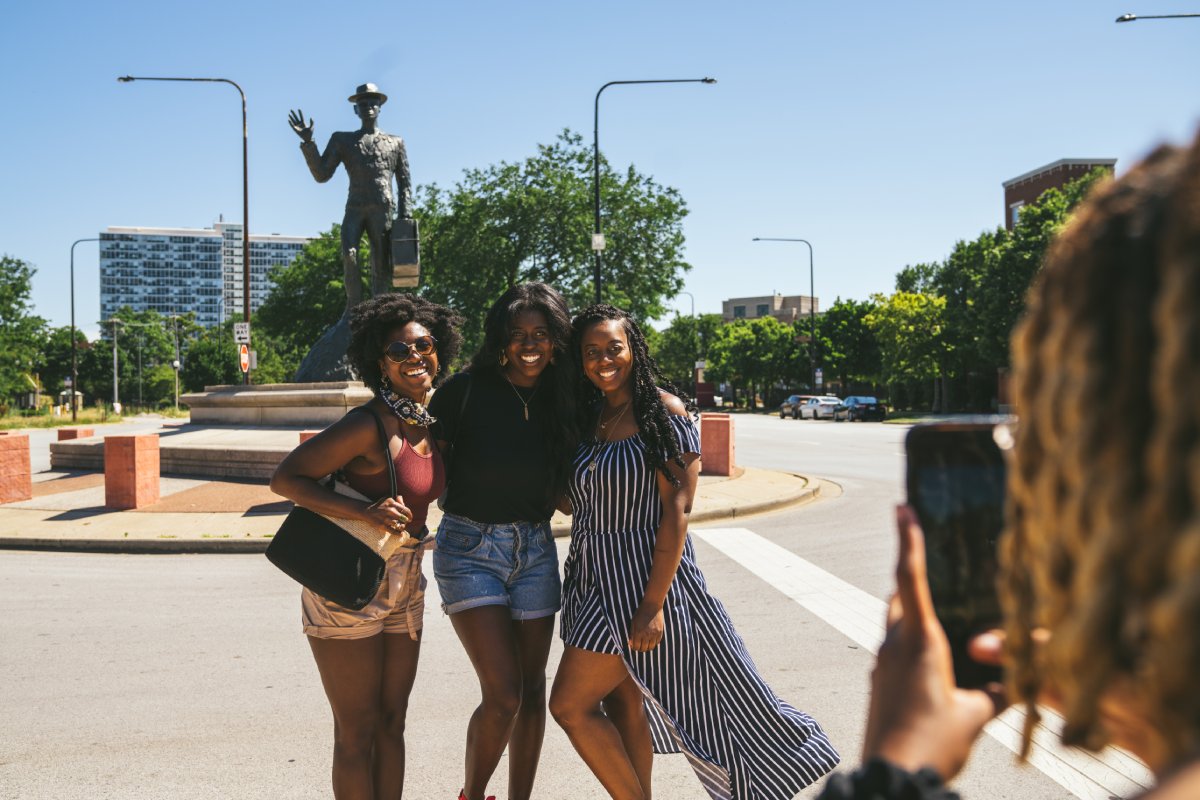Skift Take
The $5.5 million grant will obviously help, but Chicago faces a large uphill as it crafts a more inclusive tourism. It's facing historic racial inequalities that continue to keep many neighborhoods down.
Chicago tourism officials plan to drive visitation into and expand its marketing coverage for South Side and West Side neighborhoods after receiving a $5.5 million grant from the city government.
The grant originated from the $1.9 trillion 2021 American Relief Plan Act. Local governments received a portion to support their recovery. The city of Chicago was allocated $1.9 billion. The city has been using the funds to help neighborhoods and communities recover from the pandemic, with tourism being an avenue.
The city’s economic inequalities have worsened since the pandemic. Food insecurity has increased 19 percent from pre-pandemic levels, and 37 percent higher for Black households.
Chi-Town tourism is still in recovery mode. It received around 50 million visitors last year, still down from 60 million in 2019, according to Lynn Osmond, president and CEO of Choose Chicago, the city’s tourism agency. Choose Chicago expects a full recovery to come in the first quarter of 2025.
At the moment, Choose Chicago currently works with Woodlawn and Bronzeville and 16 other neighborhoods, many of which are in the South Side and West Side. With the $5.5 million grant, it will expand its coverage to Englewood, South Chicago, North Lawndale, Hyde Park, Rosedale and multiple other neighborhoods in those areas.
Choose Chicago selected the neighborhoods that were ready to embrace tourism. “Not all 77 neighborhoods are ready for tourists, whether it be from cultural assets, tourism readiness or safety issues,” Osmond said.
For Chicago, visitor expectations center around spots like Millennium Park, Willis Tower and Navy Pier. “It’s been our experience they’ve been surprised when they get the opportunity to check out the South Side,” said Frank McGee, a Chicago native and marketing manager of Chicago Private Tours, which tries to take 90 percent of its guests to the South Side.
South Side neighborhoods are often overlooked and don’t get the attention they deserve due to public misconceptions. “There’s a lot of concern around safety, especially among international folks,” McGee said. “Unfortunately the media in the past has kind of signed onto proliferating that negative perception.”
Inclusive tourism is increasingly become a popular trend among American tourism agencies. Meet Boston most recently used its $35 million budget to support initiatives drive visitation to the city’s diverse neighborhoods beyond the traditional hotspots and spread the wealth of tourism.
South Side and West Side neighborhoods have been victims of historic inequities. In Englewood, which is predominantly Black, the median income of the neighborhood was $22,228 between 2016 and 2020, compared to $62,097 for the whole city, according to the Chicago Metropolitan Agency for Planning. Life expectancy there is 60 years old, compared to 90 for the predominantly White Steerville nine miles away, according to NPR.
The aim is to not only drive visitation and economic growth, but to also empower locals with pride in their homes and economic growth. “It’s really bringing back that civic pride that will lead to ownership of more homeownership and more destinations desirability for tourists,” Osmond said.
The $5.5 million investment will be spread equally among the neighborhoods, but the type of work will vary depending on what stage the neighborhoods are in terms of tourism needs. Hyde Park, which has the University of Chicago and Barack Obama’s family home, is the most tourism-ready, Osmond said.
For neighborhoods like North Lawndale and Englewood, cleaning up the streets, train stations and landscaping will be a first step. “When a neighborhood looks neglected, it feeds on that sense of neglect,” Osmond said. “What you want to do is bring back civic pride back to it.”
Finding tourism assets and stories to share will also be a key focus, according to Osmond. Some initial assets include historic greystones and boulevard sections.
Uncovering narratives will be essential for attracting tours to neighborhoods like Englewood, according to McGee. Bronzeville, another South Side neighborhood, has a rich history of Black jazz and blues musicians and connection with the Great Migration of Southern Blacks. “When we talk about Englewood, there’s also that history, but it’s a different story,” McGee said.”It just needs to bring it to light a little more.”
Some of the grant funding will go also toward digital advertising, providing photography services for local businesses and supporting residents to produce compelling content showcasing the things to do in their neighborhoods and promoting hidden gems on social media like TikTok. There will also be tour operator training initiatives to help locals create and support tourism businesses.
The Daily Newsletter
Our daily coverage of the global travel industry. Written by editors and analysts from across Skift’s brands.
Have a confidential tip for Skift? Get in touch
Tags: black travel, boston, chicago, coronavirus recovery, crime, sustainability
Photo credit: Multiple South Side and West Side neighborhoods of Chicago are going to be included in the city's tourism promotion and marketing efforts. David Johnson / Choose Chicago

